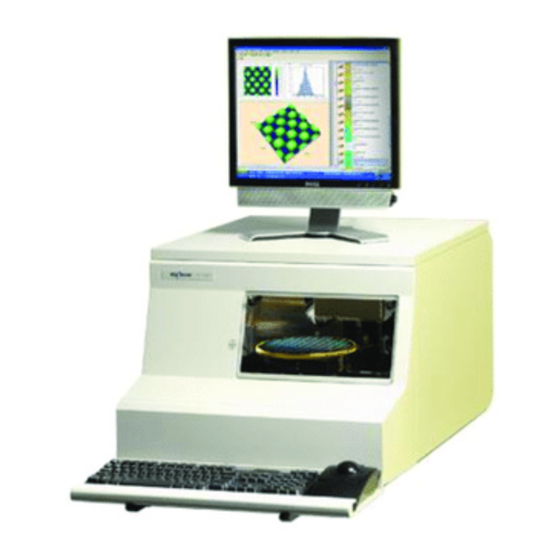
KLA Tencor P-16+ Wafer Surface Profiler Manuals
Manuals and User Guides for KLA Tencor P-16+ Wafer Surface Profiler. We have 1 KLA Tencor P-16+ Wafer Surface Profiler manual available for free PDF download: User Manual
KLA Tencor P-16+ User Manual (456 pages)
Profiler P1X / PX
Brand: KLA Tencor
|
Category: Laboratory Equipment
|
Size: 27 MB
Table of Contents
-
-
Overview31
-
-
-
Ntroduction49
-
Scan50
-
Screen Tools51
-
List Window58
-
-
Figure 3.2683
-
Figure 3.2785
-
Figure 3.3088
-
Figure 3.3290
-
Figure 3.3491
-
Figure 3.3592
-
Figure 3.4199
-
Unit Output99
-
Figure 3.56121
-
Histogram Depth124
-
Cmp Analysis125
-
Feature Find132
-
Or Bottom to Top139
-
Scan Size (ΜM)139
-
Traces139
-
Sampling (Hz)140
-
Y Spacing (ΜM)140
-
Width (ΜM)142
-
Model143
-
Matching Scores145
-
-
-
Ntroduction149
-
-
Procedure149
-
-
-
Introduction164
-
-
-
-
Screen Unction181
-
Screen Unction189
-
-
Figure 5.6189
-
Figure 5.9191
-
Video Image193
-
Abortinga Scan195
-
Introduction197
-
Figure 6.2199
-
Figure 6.4201
-
Figure 6.6203
-
Figure 6.10205
-
Figure 6.12207
-
Figure 6.13208
-
Figure 6.15210
-
Figure 6.21218
-
-
-
Figure 6.23219
-
Set Deskew Mode220
-
Figure 6.32233
-
-
Figure 6.34238
-
-
Figure 7.1247
-
I Ntroduction247
-
-
-
Figure 7.4250
-
Figure 7.5251
-
Figure 7.11255
-
Figure 7.12256
-
Figure 7.10254
-
Figure 7.14262
-
Figure 7.17273
-
Figure 7.19279
-
Figure 7.22281
-
Figure 7.26285
-
Saving Scan Data286
-
Figure 7.29288
-
Figure 7.30289
-
Figure 7.32290
-
-
-
-
Introduction293
-
Empty Document293
-
Figure 8.1293
-
-
-
Introduction297
-
Theory297
-
-
-
Introduction309
-
Definitions309
-
Figure 10.4314
-
I Ntroduction327
-
Figure 11.16343
-
-
-
Figure 11.27352
-
-
-
-
-
-
P-6 L Eveling373
-
I Ntroduction375
-
-
Stylus Removal377
-
Level and Tilt400
-
-
-
Advertisement
Advertisement
